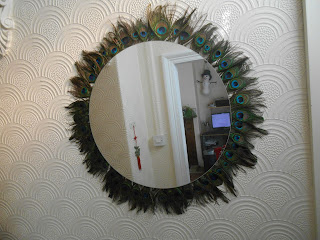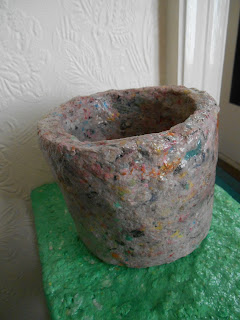The first thing you need to do is decide what you'll be selling. You can either just choose the things you love and what you're good at or start searching lists of what's popular and trending. Apparently currently this is:
1) face masks (although the market for this seems pretty saturated already)2) Jewellery
4) reusable cloth bags
5) upcycled vintage items and dyed clothing
6) ceramics, especially pots
7) home fragrance
8) knitted and fabric home decor such as rag rugs
9) bath stuff (especially bath bombs)
10) resin crafts
I've chosen to sell the things I have and love making which is basically any paper related products I can set my hand to and nothing which was listed as popular anywhere. This is partly because one of the reasons I'm trying to sell my work is because I'm running out of space in my house. The bonus is that if you enjoy what you're doing and producing things with love the outcome is often much better.
Once you have a product it's time to choose a name. For artwork the ideal is to use your own name, be your own brand. Unless your name is really common like mine. I tried multiple variations but apparently it's so common there was already someone coming up in every google search. whatever you choose needs to be easy to find. Something that isn't difficult to spell and doesn't already come up in searches. I thought about using an old family name but apparently I come from common stock and it didn't feel right somehow using someone elses name.
Choosing a name based on what your selling is great if you have a firm idea of what you will be selling and can think of something that's not already in use. I plan on adapting what I make as I go along and I already have quite a range of things to list and 'random paper stuff' didn't feel quite upmarket enough. In the end I found something that I felt suited me - I can be quite unladylike (allegedly) and I don't think of myself as an artist.
If you get stuck there are random name generators to help spark an idea and I know of at least one fb group of people that are more than happy to help with suggestions. Don't spend too much time getting hung up on a perfect name, you can always change it and rebrand yourself later. Something that amuses you the first time you hear it is likely to be come less amusing with time.
Remember if you're not selling you're marketing. To become and stay successful you need to learn and adapt as you go along. If you aren't getting sales sometimes it's not the product it's something else.
Advertising: getting on the top 5 social media platforms and posting at least once a week. Sometimes it can take time to get noticed, especially if you're not lucky enough to have money or contacts to help advertise your work. The last time I did this I managed to get an exhibition, mentions in magazines newspapers and even had my work on tv. I was lucky enough to be one of the first making pinatas in the uk. Someone even said we chose you because you were the only one we could find.
Check your footfall, be it physical or virtual. If people aren't looking at your product then that's the most important thing to fix. And people will look at anything, sometimes because to them it's funny or hideous to them or priced ridiculously, maybe they're randomly browsing, and you get those that like your work but prefer the idea of making their own. If people don't see it and they don't know it's there they can't buy it.
Pricing: check out the competition but don't undersell yourself. Pricing is one of the reasons I no longer make and sell pinatas. The amount I could charge didn't cover the time I put into them. People didn't want to spend that much on something they were going to smash up later. I sold my first one for 99p on ebay as I didn't believe they would sell.
I'm trying out different products this time. Learning and experimenting. There are lots of ways to work out how to price your product, there are websites which help you with the maths and blank business plans to help you think through the process. Take into account the time you've spent making it (your time is precious and important) as well as the cost of materials (double this to take into account inflation and the potential to grow your business), add on around 10% for hidden costs such as using a room in your home or using heating and lighting whilst you work. See what similar products are selling for - although this isn't always a great guide. People are willing to pay more for a product that's better quality or to pay extra for a recognisable name or brand.
Always start with higher prices and adjust down later if necessary.
Where possible sell at a range of prices, such as smaller versions or prints. People will be attracted to one thing and then often find themselves browsing to see what else is available. This way you catch those who love your work but find your original product is out of their price range.
Know your market: sometimes people just love your style and you're lucky enough to have your customers come to you. The rest of us have to live and learn and
Don't marry an idea, flirt with the alternatives: Be prepared to change and adapt as you learn.
Keep a liveable work/life balance: Don't overload yourself. Try to make sure you can take time off when you need to. Trying to sell handcrafted work is stressful and it's pretty rare to strike gold straight away and find your things selling like hotcakes instantly. It takes a lot of work and compromise and sacrifices. Don't forget to look after yourself too.







No comments:
Post a Comment